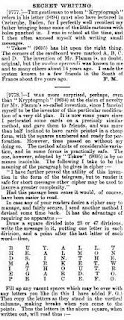A fax with an encoder, model HC-4400-09 from the Swiss Company Crypto AG, was placed at Ministry of Foreign Affairs of the Slovak Republic (SR) and abroad at the representative offices of the Slovak Republic. It was used to encrypt and transfer copies of documents using the regular telephone network. The electronic device was compatible with any fax machine or personal computer. It was in the service as a fax server, did not have any restrictions on standard devices, with an error correction mode, automatic protocol adaptation, a security module resistant to unauthorised manipulation, automatic or manual key selection, for protection against forgery, for generating and encrypting keys, a program for managing keys, protected database, speed from 2400 to 14400 b/s. Installation and operation of the fax machine was simple.
 |
| Cryptodevice - a fax with encoder - model HC-4400-09 |
The device was manufactured in the 1990s by the Swiss company Crypto AG, which specialised in communication and information security. The predecessor of CryptoAG was AB Cryptoteknik, founded in Stockholm (Sweden) in 1920 and producing mechanical cryptographic machines.
During World war II, the company supplied up to 140,000 encryption devices to American troops. In 1952, the company moved to Switzerland, and in 1970 it was secretly bought (and influenced) by the Central Intelligence Agency (CIA) and the West German intelligence service BND, starting Operation Rubikon (Operation Thesaurus). The secret operation was used to collect communication information about the encrypted government communications of other countries, including the Slovak Republic (it is assumed that the operation affected up to 100 countries). This was achieved by selling manipulated encryption technology — exploiting the weakness of the algorithms.












